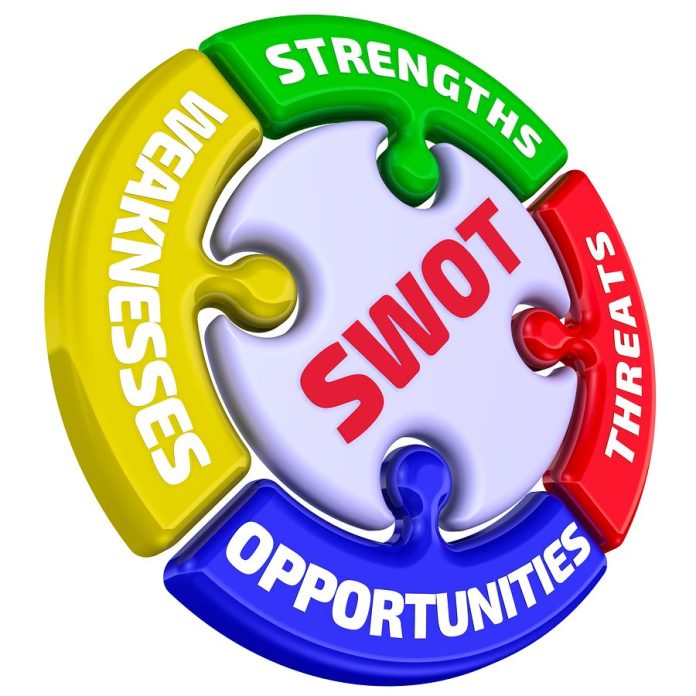Security Industry SWOT Analysis: Strengths, Weaknesses, Opportunities & Threats
Security industry swot analysis – While it can be hard to see it moment-by-moment, the electronic security industry does have considerable strengths. To begin with, the security spend is no longer seen as a grudge buy – it’s a necessity for all businesses.
Part of the reason for this is changing technology which allows users to see return on sales. Those of us with long memories recall the 1990s when most users had little interest in electronic security. The idea of smart cities or smart homes was inconceivable, notwithstanding the technological challenges of the time.
Another strength apparent today is that smart solutions tend to revolve around security, even if they include multiple sub systems. Modern security technologies lend themselves to being managed using the latest communications technologies – you could say this applies to any technology, but it doesn’t really. Some systems are vital to have access to remotely – security and safety systems are at the top of the list.
Governments and providers are currently investing in infrastructure. Sure, the NBN is a bit of a mess but network bandwidth and reliability are strong in metro areas and getting better all the time.
The reason for this infrastructure investment is, to a large extent, consumer-driven. It’s not that everyone has full HD CCTV solutions, but that today we all increasingly consume ‘TV’ shows and even old movies via Netflix, Stan, Youtube and other streaming services. Who would have thought 15 years ago that the primary driver of investment in broadband networks would be the first series of Game of Thrones?
Our industry has weaknesses and faces threats, too. Being bigger attracts interest from even bigger corporate fish. We’re also starting to reap the rewards of decades of under-investment in training. Proper training isn’t easy, and the training business has long been bound up in red tape and over-governed by special interest groups. That education itself has become a for-profit business has not helped our cause.
Consider that university students pay hundreds of thousands of dollars for degrees, yet their exam papers are marked by people paid under the basic wage. Clearly, the best option for our kids is that they are taught by someone who cares about something other than profit, however, Casy Van Engelen can’t educate the electronic security industry all by himself.
Another weakness is runaway price falls in hardware. Obviously, prices do fall. But there is a point past which growth cannot be ‘bought’ out of mature markets without erosion of product quality.
We’ve seen with established manufacturers that the first victim of falling profit is less R&D, and that means less clever technologies. It’s a double-edged sword because the more affordable that exotic technologies like thermal imaging and IVA become, the more likely they are to be installed by users whose budgets are stretched thin by investment in…other exotic technologies.
Security Industry SWOT Analysis
Fortunately, here lies opportunity. Many of the electronic security industry’s best technologies can serve more than one master and in doing so, can re-frame their case for investment. Fortunately, too, some technologies demand a basic level of data input quality which means price can never be the only consideration.
If you speak with any serious security manager of a large site, you’ll be left in no doubt of this operational imperative. Consider that video analytics, including license plate recognition and face recognition, simply won’t work consistently if it’s fed low quality data from low quality or poorly installed camera systems. And sensors in challenging applications that constantly false alarm are going get bounced, along with their installer’s reputation.
When you think of opportunity, think laterally because what’s interesting as an observer is how many security markets there are today. There’s the home security and kind-of home automation market (smoke sensors, smart switches, flood sensors, et al).
There’s the corner shop surveillance system market, which seems to employ camera sensors made by a manufacturer from 2003 who had never heard of WDR or low light. There’s the quite serious market, which is governed by performance unless it costs too much. And finally, there’s the serious market.
The serious market is not only about those big users prepared to install integrated everything (prisons and high value mining companies) – it includes clever users who deploy high quality solutions topically, knowing that not only are they fit for purpose but that what seems expensive, is what delivers required performance and saves money over time.
Think about thermal perimeters, video verification, fire detection cameras, clever open VMS, any input CMS solutions and better-than-ever biometric readers. Think about solutions like Avigilon’s Appearance Search, which frees up hours of time for security staff every single day. Think more about what your clients need business-wide and less about what you want to sell them. You’ll find there are endless opportunities out there.
You can read more about undertaking a SWOT analysis here or read more security news at SEN.
“Security Industry SWOT Analysis: Strengths, Weaknesses, Opportunities & Threats.”










